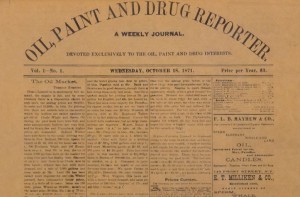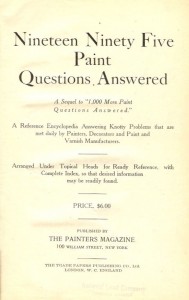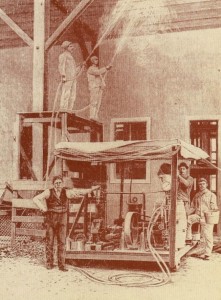As a Chicago area painting and decorating contractor for nearly twenty five years, I have always been fascinated by paint memorabilia and the history of paint through the ages. Over the years, I have accumulated a vast array of tools, equipment, signs, catalogs and publicity materials of different kinds.
During the last three years, I established a web presence to showcase my interest in paint memorabilia. That move helped me to get recognized as a custodian of the history of the paint industry in the United States. In April of 2010, I was contacted by a librarian at Valspar in Minnesota. Once headquartered in Rockford, Illinois, being an acquisition-minded company, Valspar purchased a number of prominent Chicago paint manufacturers, such as Elliot Paint, Chicago Paint Works (Chief Paint), Stetson, Enterprise, Armstrong to name a few. In the process, they inherited the paint catalogs these companies used to promote their different lines of paint, along with the promotional, point-of-sale materials, color cards, etc. When Valspar moved its headquarters to Minneapolis in 1970, that paint memorabilia collection ended up in storage there for forty years. When Valspar made the decision to move to a new Minneapolis location, that collection became extra baggage that needed to find a new home. This is when the story takes an interesting turn!
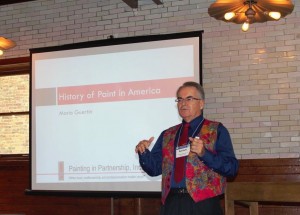
Presentation at the Glessner House in Chicago
Determined to find a reliable custodian for that very special collection, the Valspar librarian first contacted the Chicago History Museum to ascertain their interest. They turned down Valspar’s offer to donate the collection to them. Refusing to give up her quest, the librarian found me on the web and started a conversation that led to the transfer of most of the Valspar Collection of paint memorabilia to my custody. The story does not end there. In fact, the real story just began!
Among this memorabilia, was a bound collection of eight supplements to its newsletter that the Armstrong Paint Company produced and published in 1946-1947 to celebrate its upcoming centennial in Chicago. These supplements depicted the history of paint from the caveman, through antiquity, the colonies, the Industrial Revolution and the roaring 1920’s. It is a treasure trove of information, pictures and stories. I was so inspired, that I decided to develop a Powerpoint presentation on the “History of Paint in America” to tell the story of how paint evolved from mixing ingredients in the field to ready-made paint in cans. The story also highlights the major technological and socio-economic developments that made that evolution possible.
Since I developed that presentation, I have given it to seven different groups in the painting industry, interior design, architecture and the historical restoration field. Keeping history alive to inspire our future is what the “History of Paint in America” is all about. Thanks to Valspar and the Armstrong Paint Company for their essential contribution to this result.







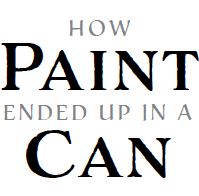
 Follow
Follow

